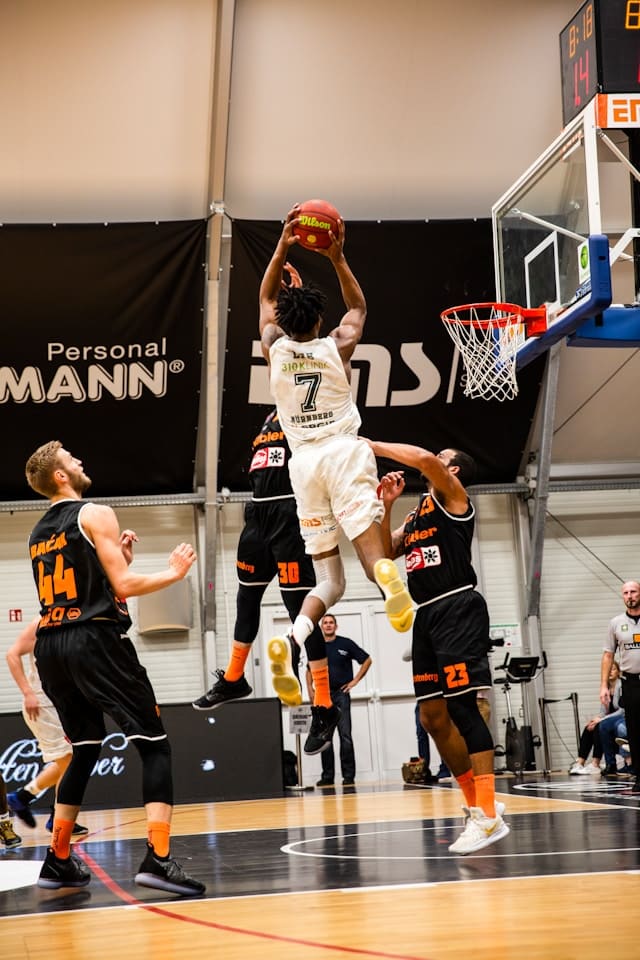What’s the Role of Tactile Feedback Gloves in Rehabilitation for Hand Injuries in Basketball Players?

With the rapid advancement in technology, it is no longer surprising to see high-tech devices being employed in the sports industry. More than just providing stats, these devices have become integral in injury prevention, performance analysis, and rehabilitation. One of the devices making waves in the world of sports, particularly basketball, is the tactile feedback glove. Powered by sensors and data analysis, this wearable device serves as a monitoring system for players, coaches, therapists, and medical professionals alike. It offers a multitude of benefits, including player safety and training efficiency. This article aims to explain how this glove technology plays a vital role in rehabilitating hand injuries among basketball players.
The Science Behind Tactile Feedback Gloves
Before delving into the benefits of these gloves, it’s crucial to understand the technology behind them. Tactile feedback gloves, also known as haptic gloves, are wearable devices equipped with various sensors. These sensors collect data related to hand movements, pressure inputs, and finger positions. Upon gathering this data, the system translates it into tactile responses, allowing wearers to have a virtual sense of touch.
A lire en complément : How Can 360-Degree Video Analysis Improve Tactical Awareness in Soccer Defenders?
This technology is not entirely new, as tech giants like Google have dipped their toes in designing such systems. However, the application of tactile feedback gloves in sports, specifically in basketball, marks a significant innovation. These gloves offer an immersive experience, providing real-time insights into a player’s hand movements, which are critical in shooting, passing, and dribbling.
Tactile Feedback Gloves in Sports Training
In basketball, precise hand movements and coordination are essential. This is where tactile feedback gloves prove their worth. They monitor and analyze the player’s hand movements during training sessions, offering precise data that can be used to improve performance.
Avez-vous vu cela : How to Develop a Progressive Overload Plan for Climbers Targeting Big Wall Ascents?
The data collected by the glove’s sensors is processed and can be viewed on a connected device. It provides insights into a player’s hand positioning, grip strength, and finger movement. This information allows coaches to create personalized training programs, focusing on areas that need improvement. For instance, if the data shows that a player’s grip strength is lacking, the coach can design drills to address this specific issue.
The Role of Tactile Feedback Gloves in Injury Prevention
Aside from performance enhancement, tactile feedback gloves also play a crucial role in injury prevention. Overuse injuries are common in basketball, especially hand and finger injuries due to the intense and repetitive use of these body parts.
With the help of these gloves, the monitoring of a player’s hand movements in real-time becomes possible. Any unusual movement or uncharacteristic data can be flagged immediately. This immediate identification of potential issues allows for quick intervention, potentially preventing an injury from occurring or worsening.
The Application of Tactile Feedback Gloves in Hand Injury Rehabilitation
The benefits of tactile feedback gloves extend to injury rehabilitation as well, particularly for hand injuries – a common ailment among basketball players. These gloves are an excellent tool in therapy sessions, assisting therapists in monitoring the progress of a player’s recovery.
In rehabilitation, the wounded hand’s movements are usually restricted to prevent further damage. During this period, the tactile feedback gloves can provide therapists with accurate data about the injured area’s condition. These data points can guide the therapist in designing a therapy plan that is appropriate and effective.
Moreover, these gloves also offer biofeedback, which is beneficial in injury rehabilitation. Biofeedback is a therapy technique wherein patients are taught to control their body functions, such as heart rate or muscle tension. With the real-time feedback from the glove, players can learn to adjust their hand movements to avoid unnecessary strain or to promote healing.
Final Remarks
Technology has indeed revolutionized sports, from training to injury prevention and rehabilitation. Tactile feedback gloves, with their sensor-filled and data-driven design, have come to the forefront, particularly in the world of basketball. They do not only improve the players’ performance but also safeguard their well-being, making them valuable assets in the court. As they continue to evolve, there’s no telling the extent of their impact on the sports industry.
Tactile Feedback Gloves in Hand Therapy and Exercises
Hand therapy is a vital part of the rehabilitation process for basketball players who have experienced hand injuries. Taping and strapping, combined with hand exercises, form the core of hand therapy. These exercises aim to restore hand function, improve grip strength, and enhance fine motor skills. However, the incorporation of tactile feedback gloves into these hand therapy sessions can take the rehabilitation process to a new level.
These gloves, loaded with pressure sensors, offer real-time data about the hand movements and exerted pressure of the player. This data is available in an open separate window on a connected device, allowing the therapist or the player to monitor it closely. The received data can provide valuable insights into the effectiveness of the exercises, the player’s progress and the areas that need more attention.
By wearing these gloves, the player can gain better control over their hand movements during exercises, thanks to the immediate tactile feedback. The biofeedback offered by these gloves, for instance, can help players understand when they are putting too much strain on their hands or when their movements are not as efficient as they should be.
Hand exercises often involve the use of tools like sports tape or aids to improve hand grip strength. However, the integration of wearable sensors in gloves offers an enhanced dimension to such rehabilitation exercises. As a result, more effective and personalized exercise routines can be developed to accelerate the recovery process and minimize the risk of further injuries.
The Future of Tactile Feedback Gloves
Tactile feedback gloves are a pioneering technology, and their potential applications are vast. Considering the benefits they offer, we can anticipate their usage in various sports and rehabilitation sectors in the future. They could be utilized in other sports such as golf or tennis, where hand function and grip strength play a vital role. The gloves could also be used in the rehabilitation of other upper limb injuries, such as wrist or elbow injuries.
Moreover, the current technology is bound to evolve, with more advanced sensors and data analytics likely to be integrated. Advanced pressure sensors could provide more nuanced data about hand movements, such as the force exerted by each finger separately. Furthermore, the real-time data could be combined with other health metrics like heart rate to provide a comprehensive view of the athlete’s condition.
As the technology becomes more affordable and accessible, we could expect to see it being adopted more widely. For instance, amateur players or individuals recovering from hand injuries could use these gloves at home to aid their recovery and improve their motor skills.
Conclusion
In conclusion, tactile feedback gloves have already made a significant impact on sports training and injury rehabilitation. They offer a unique combination of performance analysis, injury prevention, and rehabilitation support. By providing real-time, tangible feedback, they allow for immediate adjustments, personalized training and therapy plans, and efficient monitoring of progress.
The potential of tactile feedback gloves goes beyond basketball or professional sports. As the technology continues to evolve, their use could extend to various sports, rehabilitation sectors, and even home use. Indeed, wearable sensor technology like tactile feedback gloves represents the future of sports training and rehabilitation. The gloves’ importance in enhancing player performance, preventing injuries, and aiding faster recovery cannot be overstated.
